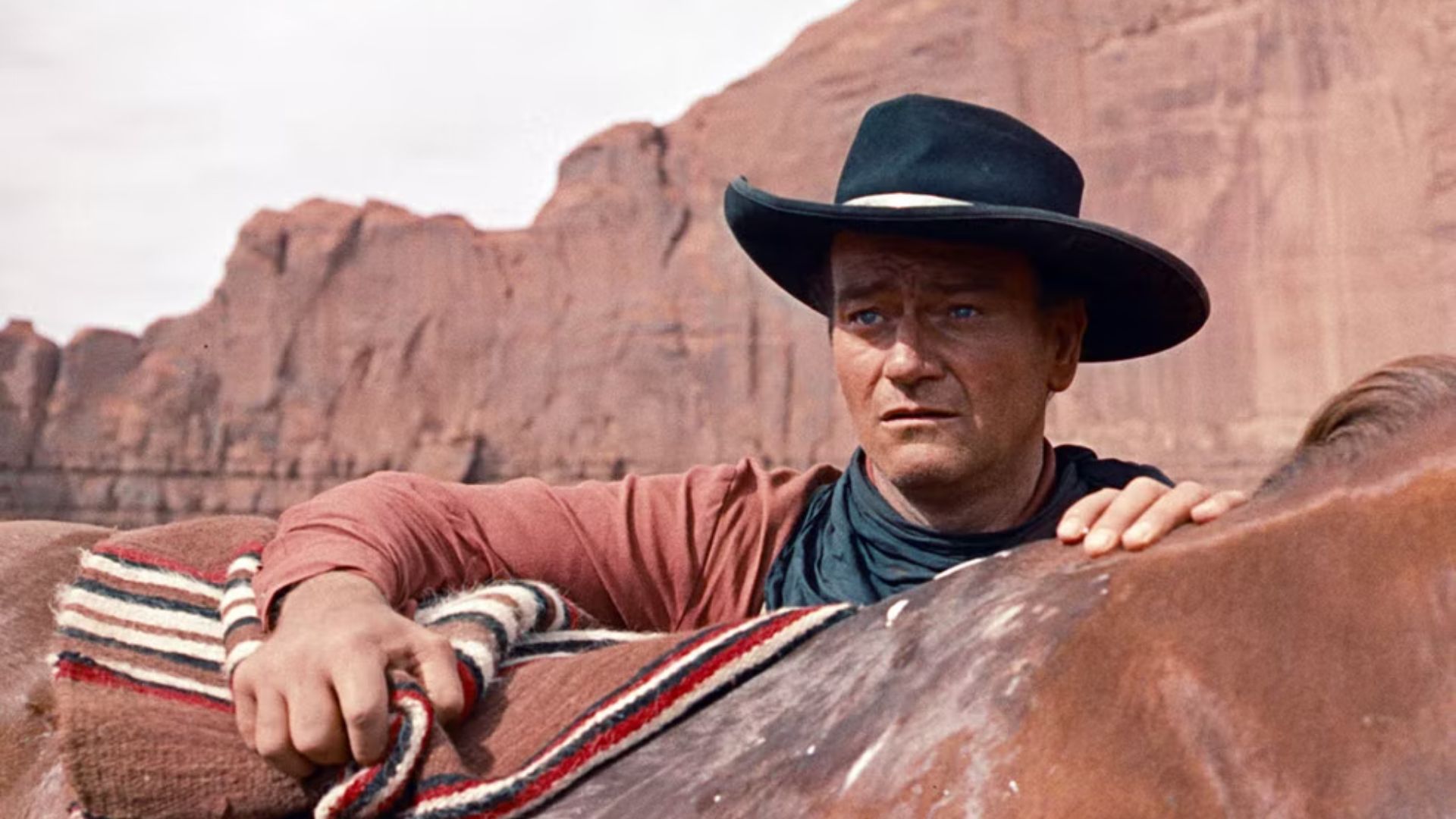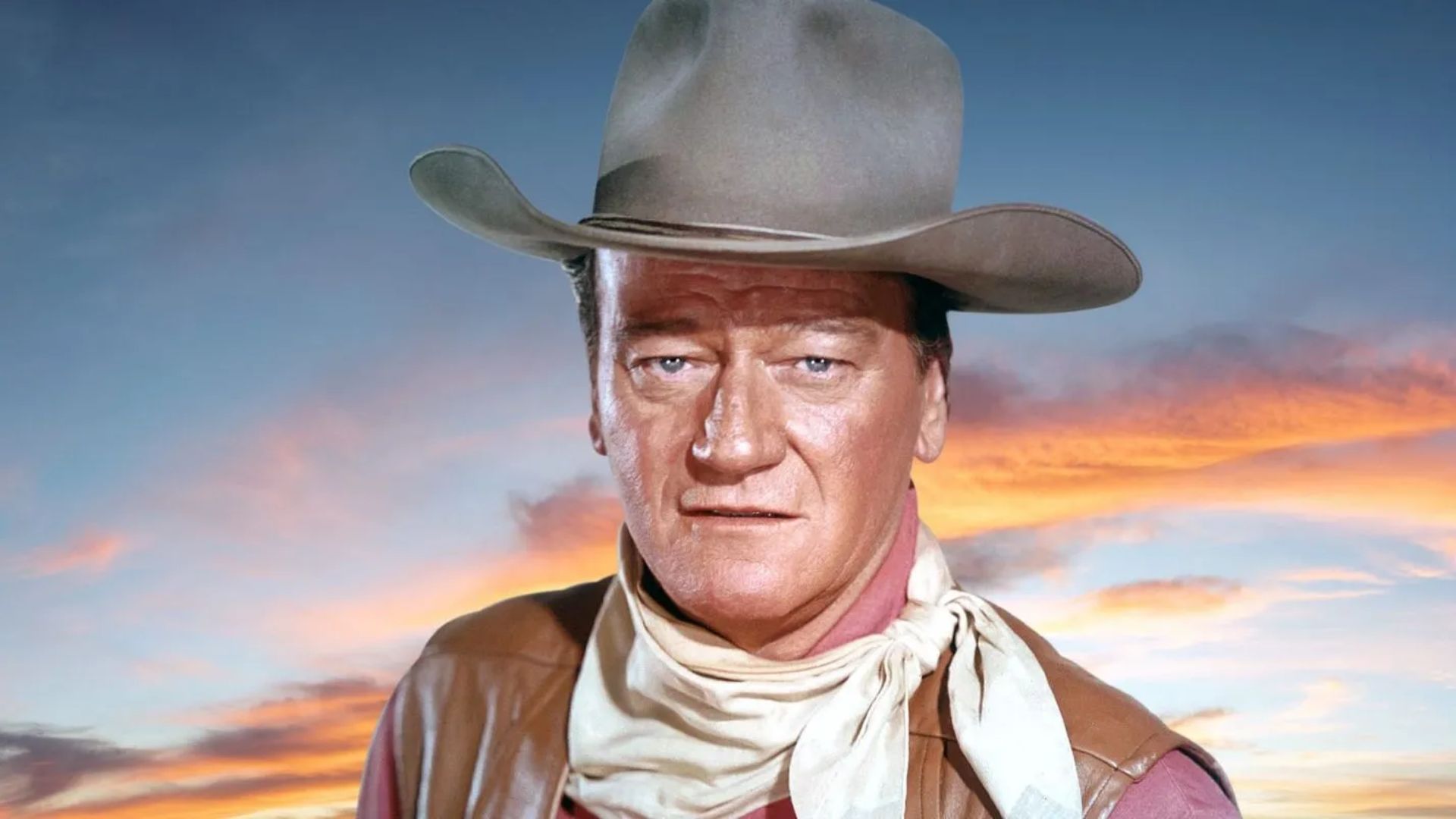John Wayne - Known For His Roles In Western And War Movies During Hollywood's Golden Age
John Wayne, an American actor who mostly starred in Westerns and war movies, portrayed characters in over 75 movies that often embodied the heroic American "can-do" attitude. In American cinema, he is regarded as an icon.
Author:Emily SanchezReviewer:James PierceJan 18, 2023102 Shares1.9K Views

John Wayne, an American actor who mostly starred in Westerns and war movies, portrayed characters in over 75 movies that often embodied the heroic American "can-do" attitude. In American cinema, he is regarded as an icon.
Quick Facts About John Wayne
| Full Name | Marion Michael Morrison |
| Birthday | May 26, 1907 |
| Occupation | Actor, Director, Producer |
| Place of Birth | Winterset, Iowa, United States |
| Height | 6ft 4in (193 cm) |
| Years Active | 1926-1976 |
| Zodiac Sign | Gemini |
| Marriage(s) | Josephine Alicia Saenz, Esperanza Baur, Pilar Pallete |
| Place of Death | Los Angeles, California, U.S. |
| Died | June 11, 1979 |
| Cause of Death | Stomach cancer |
Early Life Of John Wayne
On May 26, 1907, in Winterset, Iowa, Marion Robert Morrison was given the name John Wayne. (Also known as Marion Michael Morrison and Marion Mitchell Morrison). Wayne, one of the most well-known movie stars of the 20th century, is still regarded as an American movie legend.
Wayne Morrison, the elder of Clyde and Mary "Molly" Morrison's two children, relocated to Lancaster, California, when he was around seven years old. After Clyde's fruitless effort to become a farmer a few years later, the family relocated once again.
Wayne moved to Glendale, California, where he acquired the recognizable moniker "Duke" while there. He had a dog by that name, and since he spent so much time with it, the two were known as "Little Duke" and "Big Duke." Wayne did well in his courses and a variety of extracurricular activities in high schools, such as football and student government.
In addition, he took part in a lot of students' plays. Wayne began his undergraduate career in the autumn of 1925 after receiving a football scholarship to the University of Southern California. He joined the Sigma Chi fraternity and kept up his good academic performance.
Unfortunately, he lost his scholarship after two years due to an injury that forced him to stop playing football. Wayne had worked as a film extra while still in college, playing as a football player in Brown of Harvard (1926) and Drop Kick (1927).
John Wayne Career
During his career, Wayne appeared in 170 feature films, and he was largely typecast in Western films. When he started working for Fox Film Corporation and director John Ford employed him as a prop boy and extra, he made his debut in the entertainment industry.
He rose through the ranks, initially getting small roles and supporting parts until director Raoul Walsh saw him lugging studio equipment and hired him as the lead in his 1930 movie "The Big Trail." Although it is praised by many contemporary reviewers, "The Big Trail" was viewed as a major economic failure when it was released.
It was one of the first high-budget movies of the sound era to be filmed outdoors. Wayne, as a result, was reduced to numerous minor parts after the failure of his initial movie, and from 1930 to 1939, he also acted in what he believes to be roughly 80 low-budget horse opera movies.
Wayne's breakout performance occurred in John Ford's "Stagecoach" in 1939. Ford originally struggled to get funding for the movie, in large part because of Wayne's B-movie position and prior performance. In the end, he was successful in having the movie made, and it was a huge success, making Wayne a well-known and popular actor.
Over the next twenty years, Wayne would go on to make appearances in over twenty John Ford movies. Wayne was not drafted into the military when the United States joined World War II because of his age and familial obligations. He did, however, spend three months with the USO touring American outposts and hospitals in the South Pacific in 1943 and 1944.
On this tour, he also assisted in the covert evaluation of whether General Douglas MacArthur was impeding the work of the Office of Strategic Services (OSS), the precursor to the current CIA. In his 1941 debut color film, "Shepherd of the Hills," Wayne co-starred with Harry Carey.
He appeared in movies like "Reap the Wild Wind," "Flying Tigers," "A Lady Takes a Chance," "Tall in the Saddle," "Dakota," "Red River," "Wake of the Red Witch," and "Sands of Iwo Jima" throughout the 1940s.
He eventually went on to get an Oscar for Best Actor for the movie "True Grit" (1969) and a Best Picture prize for producing "The Apartment" (1960). His last on-screen appearance was in the 1976 film "The Shootist," in which he played an elderly gunfighter fighting cancer.
In addition to his career as an actor in television and film, Wayne regularly made appearances as a guest on different radio shows, typically in tragic parts. He really had his own radio adventure series called "Three Sheets to the Wind" for six months in 1942.
He also directed "The Alamo" (1960) and "The Green Berets," among other movies (1968). In addition, he worked as a producer on "The Alamo," which received an Academy Award nomination for best picture. Although he was uncredited for most of them, he produced several additional movies and other endeavors.
Personal Life & Legacy Of John Wayne
Josephine Alicia Saenz and John Wayne were married in 1933, but their marriage disintegrated in 1945. Michael, Mary Antonia, Patrick, and Melinda were their four offspring. In 1946, he married Mexican actress Esperanza Baur, but the marriage did not last. In 1954, Wayne and Baur divorced.
In 1954, Peruvian actress Pilar Pallete and Wayne were married; however, 19 years later, the pair divorced. Aissa, John Ethan, and Marisa were their children. He began seeing Pat Stacy, his former secretary after he split from Pilar, and the two cohabited until his death in 1979.
John Wayne had strong anti-communist beliefs and supported the "Republican Party." He passed away at the UCLA Medical Center on June 11, 1979, from stomach cancer. His remains were interred at Corona del Mar and Newport Beach's "Pacific View Memorial Park Cemetery."
John Wayne's Death
Wayne passed away on June 11, 1979, from stomach cancer. His whole left lung and four ribs were surgically removed when he had treatment for lung cancer in 1964. The American Film Institute ranked him 13th among the greatest male screen legends of all time two years after his death.
The Congressional Gold Medal, given to him on May 26, 1979, and the Presidential Medal of Freedom, given to him posthumously on June 9, 1980, are two of the highest civilian medals recognized by the U.S. government.
Some Interesting Facts About John Wayne
- He has three sons and four daughters.
- Wayne has been married three times.
- In their most recent movie, Jamie Stewart and Lauren Beckel played John Wayne as a gunman at a time when cancer was on the rise.
- He received the "Academy Award" for "Best Actor" in 1969 for the movie "True Grit."
- John Wayne had strong anti-communist beliefs and supported the "Republican Party."
- True Grit earned Wayne his first Academy Award for Best Actor (1969).
The Net Worth Of John Wayne
When John Wayne passed away in 1979, his net worth was $7 million. The parts he played in movies like "True Grit" and "The Alamo" helped make John Wayne one of the most well-known actors of the 20th century and helped him amass a large sum of money.
People Also Ask
When Was John Wayne Born?
On May 26, 1907, John Wayne was born.
What Is John Wayne's Alleged Net Worth?
John Wayne is estimated to be worth $50 million.
What Is John Wayne's Height?
He stood around 6 feet 3 inches tall.
Conclusion
John Wayne was a renowned actor who became a symbol of tough masculinity. He was recognizable for his tall stature, calm voice, and unusual gait. He will always be loved by everyone and live on in our hearts.

Emily Sanchez
Author

James Pierce
Reviewer
Latest Articles
Popular Articles
